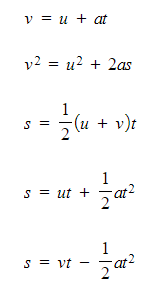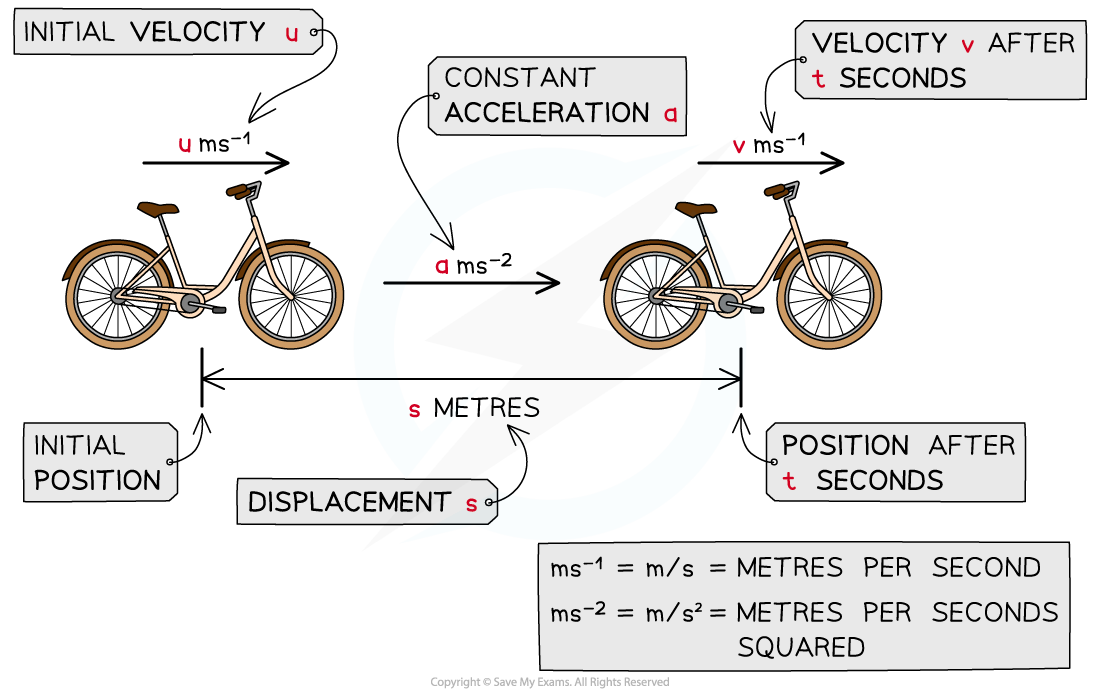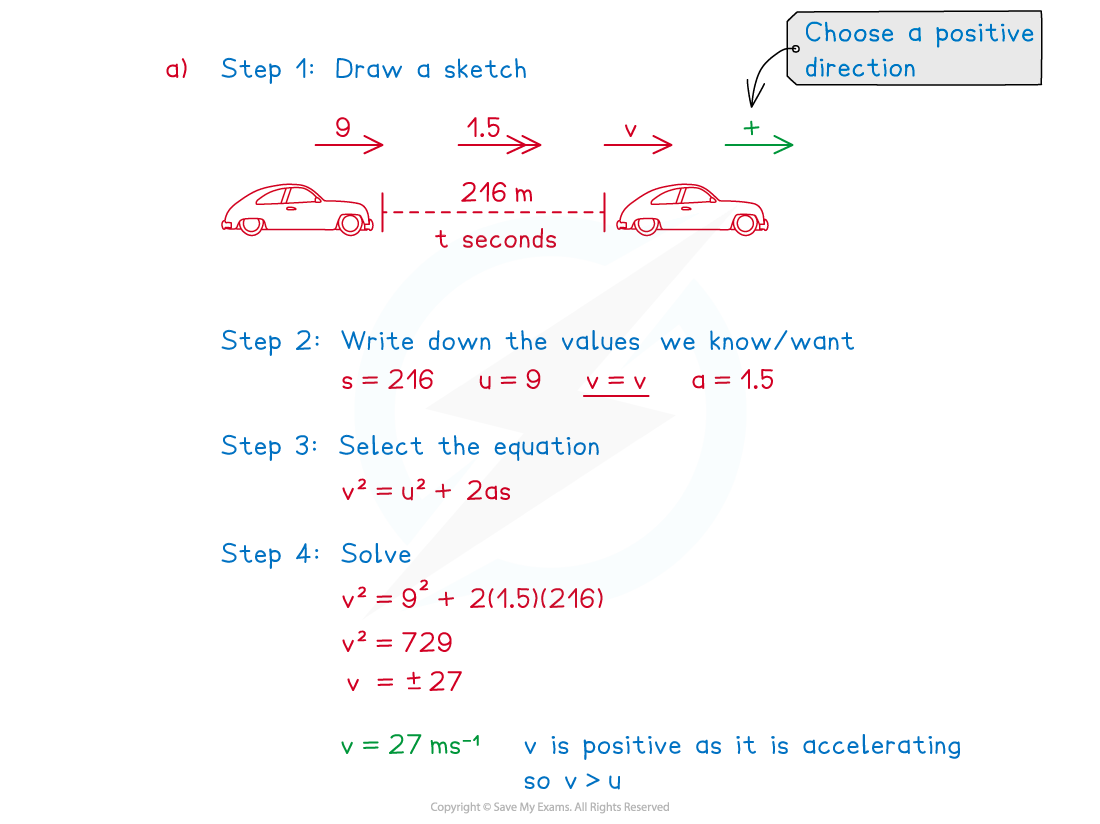- 翰林提供学术活动、国际课程、科研项目一站式留学背景提升服务!
- 400 888 0080
Edexcel A Level Maths: Mechanics:复习笔记2.3.2 suvat in 1D
suvat in 1D
What are the suvat (constant acceleration) formulae?
- For constant acceleration there are five suvat formula:


How do I identify values for suvat within a question?
- Common phrases for displacement:
- "…returns to its starting position …" is a way of saying s = 0
- Common phrases for velocity:
- “… initially at rest …”, “… stationary …” are ways of saying u = 0
- “… comes to rest …” is a way of saying v = 0
- Common phrases for acceleration:
- “… falls freely …” is a way of saying a = ± g (see the gravity section)
- Sometimes you will need to use other techniques (such as Newton's Laws of Motion) to find the acceleration
How do I solve problems involving suvat?
- Step 1: Sketch (or add to) a diagram
- Use key information in the question to include all relevant values
- Make sure you clearly show which direction you are choosing to be positive
- Choose the positive direction wisely, try to choose the direction which will result in fewer negative values needed
- You could choose the initial direction of motion to be positive or you could choose the direction of acceleration to be positive.
- Step 2: Write down what you know and what you are trying to find
- You should know 3 of the variables and need to find a 4th
- It’s a good idea to go through each of the letters in the word suvat and make a note of the ones you know and which one you are trying to find
- Step 3: Select the appropriate equation(s)
- Step 4: Solve the equation(s) and problem
- Include units in your answer and give your answer in context if appropriate
Can I use the suvat formulae for vertical motion?
- The suvat equations also apply to vertical motion (provided the acceleration is constant)
- The positive direction is particularly important
- Acceleration will often be related to gravity
What can harder suvat problems look like?
- Some problems involve splitting the motion into more than one part
- For example if acceleration has changed (but is constant for each part)
- A key feature of these problems is that v (final velocity) for the first part of the motion will be u (initial velocity) for the second part of the motion
- Some problems do not appear to give you enough information
- You may have to form two equations using the suvat formulae and solve them simultaneously
- There may be more than one particle or multiple stages to the motion
Worked Example

(a) Find the speed at the instant that the brakes are applied.

(b) Find the deceleration of the car after the brakes have been applied.

Exam Tip
- If an object is decelerating then its acceleration in that direction is negative. If you are asked to find the deceleration then you do not need to include the negative sign as this is implied by the word deceleration.
- If you need to use the answer from one part of a question in subsequent parts then use the full answer rather than the rounded answer, this avoids loss of accuracy.
转载自savemyexams


最新发布
© 2025. All Rights Reserved. 沪ICP备2023009024号-1








